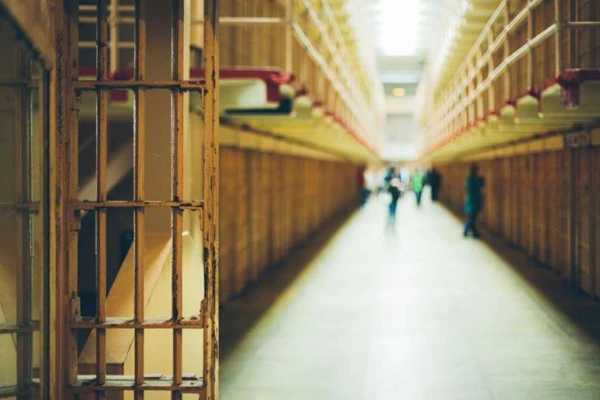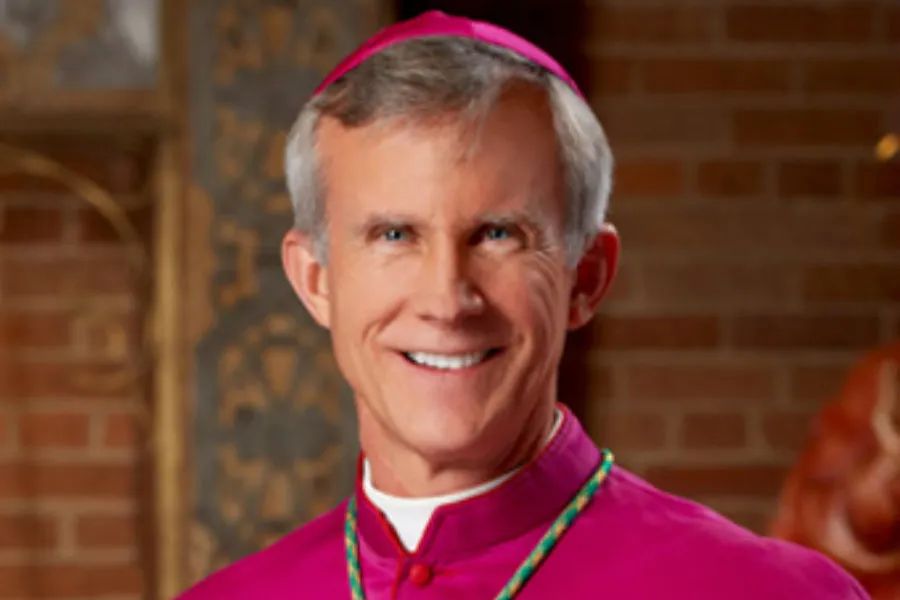
Washington D.C., Mar 23, 2020 / 03:01 pm (CNA).- The worldwide outbreak of coronavirus (COVID-19) is beginning to touch one of the populations in the United States most vulnerable to disease: the incarcerated.
A growing number of prisons in the US have confirmed cases of COVID-19, and most have suspended visits for inmates.
In the face of such precautions, prison chaplains throughout the country have had to adapt their ministry.
Joe Cotton, director of prison ministry in the Archdiocese of Seattle, told CNA that all of his chaplains are currently blocked from entering the facilities where they normally minister.
Seattle has one the highest rates of infection in the United States, with more than 1,600 confirmed cases and more than 90 deaths. Washington State was also the site of the first confirmed case of COVID-19 in the US.
“So we’re trying to be as creative as we can— some of our chaplains are doing things like developing their reflections and Communion services and programming, working from home and getting ahead, and using this time for getting things ready for when we can go back in, so that they’re well ahead of the game,” Cotton told CNA.
He said his team that normally ministers at a juvenile facility got especially creative, setting up a telephone answering service to forward calls from inmates directly to chaplains’ cell phones, depending on a schedule of chaplains’ availability throughout the week that they set up.
“Tonight’s my night, for example. So between five and nine, I’ll have my cell phone on me, and if the answering service calls me, it means someone on the inside wants to talk to a chaplain over the phone. So that’s one of the creative things that we’re doing to at least make chaplains still available…although that’s not happening in every facility.”
Art Alvarez, who has ministered at Twin Towers Correctional Facility in Los Angeles for the past 14 years, told CNA that for now, he is still able to go into the facility to minister to the men, but must keep a safe distance to avoid bringing in the virus.
In L.A., chaplains are still able to enter county jails, though that may soon change. In state prisons, all the chaplains’ operations have been canceled.
Alvarez said he has had to adapt to speaking to the men through the doors of their cells through food slots that are no longer used for food, but which are once again serving a purpose.
He said the inmates are able to have access to the news and have a pretty good idea what is going on.
“They’re concerned about their families on the outside. But on the inside, with the deputies, they feel pretty safe,” he said.
At at least one major prison— Rikers Island in New York— authorities have released dozens of inmates over fears that they may have contracted the virus. Many county jails are doing the same.
At least 38 people at Rikers Island have contracted COVID-19 and dozens more have likely been exposed to it, the Associated Press reports.
Prison officers and staff in states including California and Michigan have tested positive for the virus, and in Wisconsin, 18 inmates at a prison were quarantined last week after a facility doctor tested positive for the virus, according to reporting from the AP.
In Los Angeles county, which has the largest prison population of any county in the United States, prisoners with non-violent criminal records and who have between two and three months left of their sentences are being released.
Alvarez said he is also continuing to assist with what are known as “extractions”— per state policy, if an inmate refuses to leave his cell, a doctor, a nurse, or a chaplain must be brought in and try to talk the inmate out of his cell before the deputies are allowed to use force.
He said he was recently asked to assist with an extraction whereby the inmate was informed that he was being released, but he didn’t believe that it was really happening.
“This guy didn’t want to go home. He didn’t want to leave,” Alvarez said.
Alvarez said the jail has prepared two entire floors for quarantine, but as of March 21, no inmates are there.
He said the inmates’ attitudes are mixed during this time of uncertainty, and he said the chaplains are trying to reassure the inmates that they are in many ways safer inside than jail
“Some want to stay in, some want to go home and be with their families and protect their families,” he said.
But:
“There’s nothing more that they can say or do.”
In at least two states, Arizona and Minnesota, prison officials have waived copays charged to inmates for medical visits and waived fees for personal hygiene supplies, NPR reports. A California senator is advocating that all low-risk inmates be released nationwide.
In California, prison officials announced that a prisoner at California State Prison, Los Angeles County, has tested positive for COVID-19, and in addition, at least five prison workers have the disease, the LA Times reports.
California Governor Gavin Newsom issued a statewide, mandatory stay at home order on March 19 that workers in critical sectors should go to work. Grocery stores, pharmacies, banks and more will stay open, the governor said.
Gonzalo de Vivero, director of the Archdiocese of Los Angeles’ Office of Restorative Justice, told CNA that he has been getting calls constantly from his chaplains, asking whether they can continue to do their ministry.
Every jail makes its own rules, he said, and for now the county jails are still allowing chaplains in.
“The mayor [of Los Angeles] is asking everybody to stay home, unless your work is essential. Well, the work of a chaplain is extremely essential. But on the other hand, we have families…and that’s very hard. And the uncertainties are very hard.”
Even before the governor’s order, a lot of the chaplains’ services have had to be reduced, de Vivero said.
As of last week, they could not have more than 10 people in their services in the jails, including the minister; a chaplain last week held a communion service that normally has 35 people, but this time had only nine, de Vivero said.
In Los Angeles County in 2019, de Vivero said, the archdiocesan prison ministry said over 2,000 Masses in jails, with over 25,000 attendants.
de Vivero said he worries that switching to virtual chaplaincy during this time could cause the jails they serve in to be reluctant to allow chaplains into the jails in person after the pandemic ends. He said many of his chaplains are against broadcasting Mass by videoconferencing, and he called it a “dangerous route.”
“The institutions will be very happy to say that all Masses should be via video from now on,” he warned.
“People need people. We cannot replace going to Church with watching Mass on TV.”
de Vivero related a story of one of his chaplains, who was determined to continue to go and serve inmates in the jails during the pandemic, and whose boss at work threatened to fire him if he continued to do so.
Above all, he said, this situation highlights how difficult it is for Catholics to serve the underprivileged, even in non-crisis times.
“We have two pandemics: the virus, and the fear. And I don’t know which one is more dangerous,” he mused.
“I am very concerned about the long-term effects in our jails, because people are going to get extremely sensitive, be more prone to violence…the enemy would like to use this opportunity to fuel disagreements, arguments, and they turn into altercations, and then fights, and we have more problems that nobody needs right now.”
If you value the news and views Catholic World Report provides, please consider donating to support our efforts. Your contribution will help us continue to make CWR available to all readers worldwide for free, without a subscription. Thank you for your generosity!
Click here for more information on donating to CWR. Click here to sign up for our newsletter.




Leave a Reply